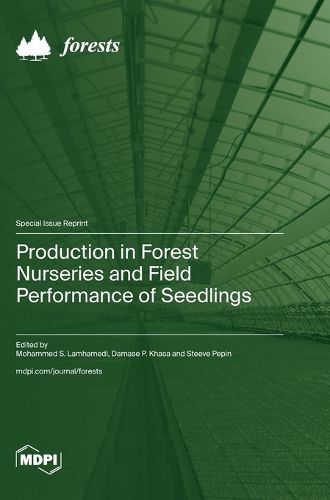Readings Newsletter
Become a Readings Member to make your shopping experience even easier.
Sign in or sign up for free!
You’re not far away from qualifying for FREE standard shipping within Australia
You’ve qualified for FREE standard shipping within Australia
The cart is loading…






This title is printed to order. This book may have been self-published. If so, we cannot guarantee the quality of the content. In the main most books will have gone through the editing process however some may not. We therefore suggest that you be aware of this before ordering this book. If in doubt check either the author or publisher’s details as we are unable to accept any returns unless they are faulty. Please contact us if you have any questions.
Forest plantations are among the tangible solutions to meet the world's needs for timber and wood products (e.g., timber, firewood, pulp, and paper) and other ecosystem services that are constantly increasing and compensate for the loss of millions of hectares of forests caused by the increase in the severity and frequency of fires, insect attacks, and environmental stresses in humid, arid, and semiarid zones. Faced with these major constraints and challenges in the context of climate change, it is not enough to plant millions of seedlings, but we must ensure the genetic selection of seeds adapted to current and future climates, the morphophysiological quality of seedlings, the quality of sites, and the optimization of cultural as well as sylvicultural practices (e.g., from seeds to sustainable plantations) to achieve the objectives of various programs (reforestation and wood production; restoration of damaged, degraded, or destroyed ecosystems; desert greening; and agroforestry) in terms of survival, growth, and yield. This Special Issue deals with different facets and topics of the seedling production chain in different countries and continents, from growing media to planting performance related to reforestation, restoration, and agroforestry programs.
$9.00 standard shipping within Australia
FREE standard shipping within Australia for orders over $100.00
Express & International shipping calculated at checkout
This title is printed to order. This book may have been self-published. If so, we cannot guarantee the quality of the content. In the main most books will have gone through the editing process however some may not. We therefore suggest that you be aware of this before ordering this book. If in doubt check either the author or publisher’s details as we are unable to accept any returns unless they are faulty. Please contact us if you have any questions.
Forest plantations are among the tangible solutions to meet the world's needs for timber and wood products (e.g., timber, firewood, pulp, and paper) and other ecosystem services that are constantly increasing and compensate for the loss of millions of hectares of forests caused by the increase in the severity and frequency of fires, insect attacks, and environmental stresses in humid, arid, and semiarid zones. Faced with these major constraints and challenges in the context of climate change, it is not enough to plant millions of seedlings, but we must ensure the genetic selection of seeds adapted to current and future climates, the morphophysiological quality of seedlings, the quality of sites, and the optimization of cultural as well as sylvicultural practices (e.g., from seeds to sustainable plantations) to achieve the objectives of various programs (reforestation and wood production; restoration of damaged, degraded, or destroyed ecosystems; desert greening; and agroforestry) in terms of survival, growth, and yield. This Special Issue deals with different facets and topics of the seedling production chain in different countries and continents, from growing media to planting performance related to reforestation, restoration, and agroforestry programs.